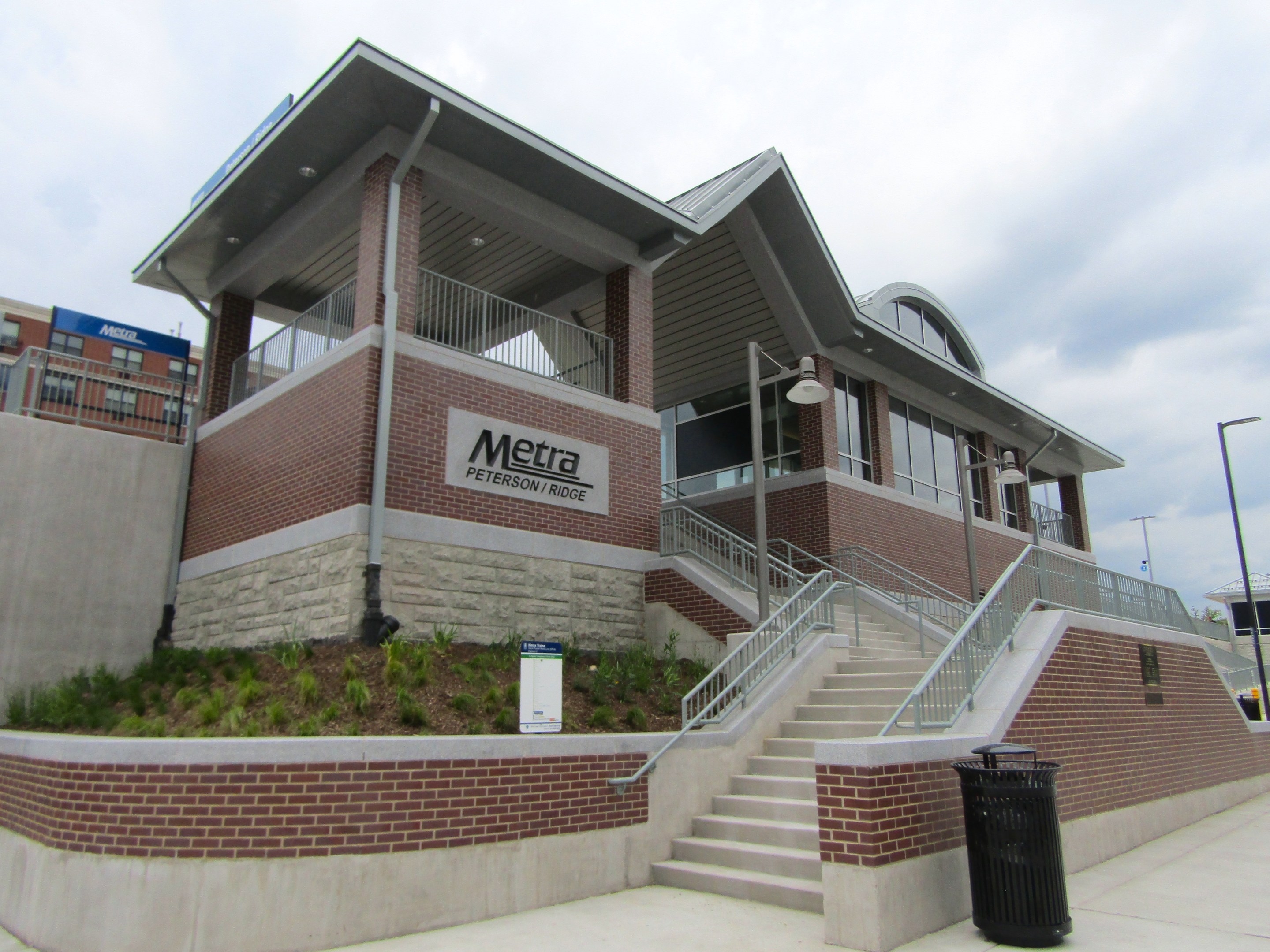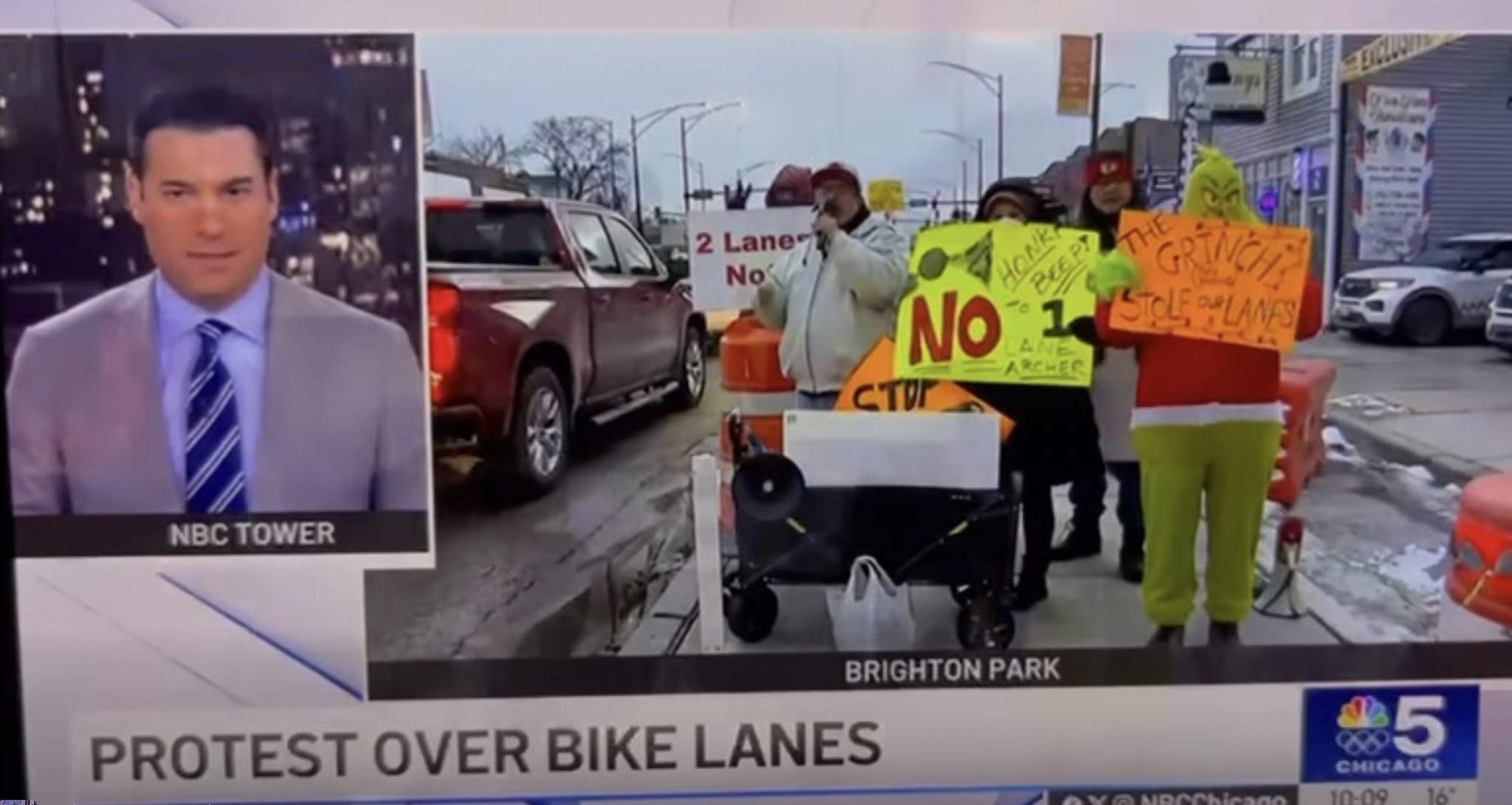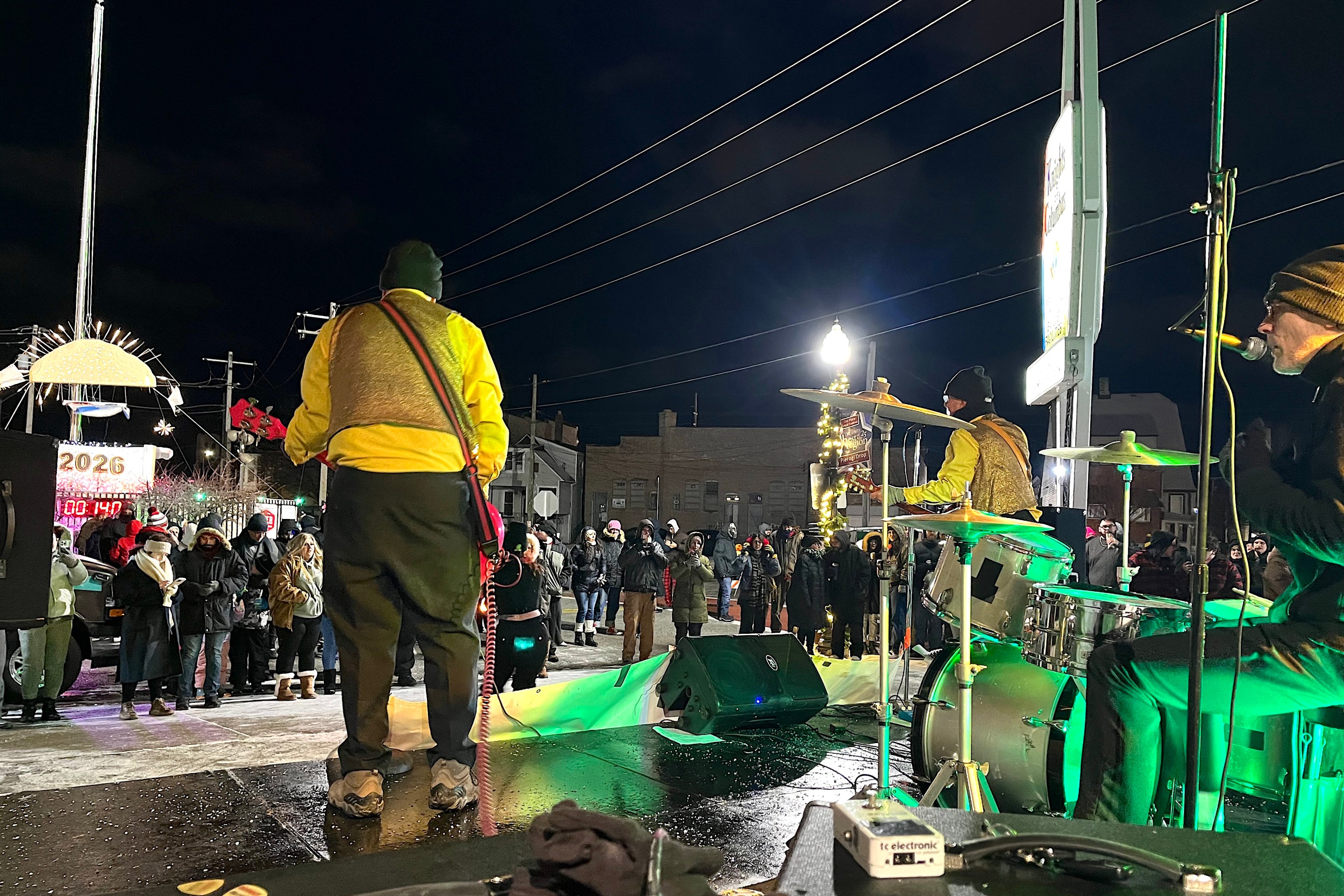
As Metra celebrates the debut of the long-awaited Peterson/Ridge infill station this week, the commuter railroad is inviting riders to weigh in on longterm improvements for the entire system.
While Chicagoland transit continues to recover from ridership loss during COVID-19, Metra has been moving away from its old service model that was based on the assumption most riders live in the suburbs and work in Chicago. The railroad recently launched a survey to get a better sense of how riders use the system post-pandemic. The survey will be up until June 19. Metra is also planning to hold a virtual meeting next Thursday, May 30 (registration link here). The draft of the plan is expected to be released in early 2025. Metra will host more public meetings to get feedback before finalizing it.
In the meantime, the long-awaited Peterson/Ridge station, 1780 W. Peterson Ave. in the West Ridge community area, officially opened to the public on Monday, May 20. More on that in a bit.
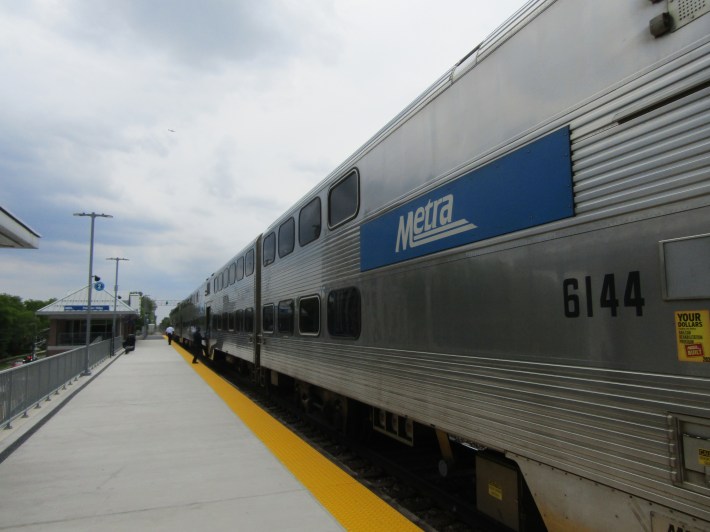
Metra Systemwide Network Plan
The Metra Systemwide Network Plan is a major part of the railroad’s broader effort to shift from traditional downtown-orientated commuter rail toward what it calls "regional rail". This means more regular schedules that provide more off-peak service, more reverse-communing options, and generally more service to destinations other than Chicago.
According to a Metra press release, the plan will recommend changes "that can be made on each rail line by adjusting train schedules and building new infrastructure." Metra spokesperson Michael Gillis told Streetsblog that they are not looking to extend the service past the lines' current end points, but that doesn’t mean riders won’t see any new service at all.
"The Systemwide Network Plan is not exploring extensions of service beyond the current outlying termini in the suburbs, but we will be looking at the possibility of better connecting and coordinating Metra services in Chicago," he said. "This could include limited exploration of new infill stations in key areas and potentially building new connections or operating on short segments of corridors that don’t currently have Metra service."
While the infill stations that opened in the last 20 years have been limited to Chicago, Metra has also considered building infill stops in the suburbs. The long-discussed North Central Service Des Plaines station, for example, has been touted as a way to provide more direct service between the northwest suburb and O’Hare Airport, and a faster option to reach the Loop.
Gillis also said that the big part of shifting to the regional rail model would be improving the capacity of existing lines. For example, he said, the currently single-track segments of the line could be double-tracked, some rail crossings could be grade-separated, and the lines could get crossovers and improved signals to improve rail traffic flow. Metra currently has several single-track sections, most notably on the SouthWest Service and Milwaukee District North lines.
Metra only owns the railroad tracks outright in its four "district" lines – the rest are owned by freight railroads. In the past, that has hampered service expansion. For example, the major reason why North Central Service line never had weekend service was because the Canadian National Railway, which owns most of the right of way, resisted.
Asked whether there are any situations where the service increases are completely off the table, Gillis said are several stumbling blocks that service improvements would need to overcome. "In order to implement our regional rail vision, we will need funding to build and operate new service, buy-in from our freight partners and other regional stakeholders, and riders to use the service." He added that the railroad would also need to buy more trains.
Peterson/Ridge station and improvements
The Union Pacific North line's Peterson/Ridge station and the Rock Island District line’s Auburn Park station have been discussed for decades. Even when Metra committed to them, the railroad faced repeated construction delays. Even though Auburn Park broke ground first, Gillis said that it won’t be finished until “early 2026.”
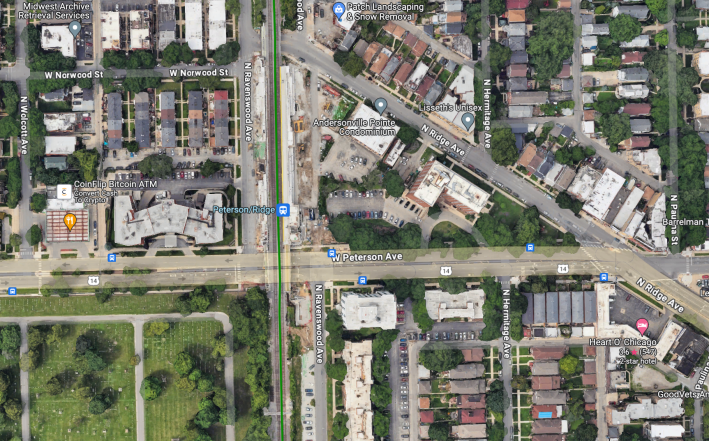
The newly opened Peterson/Ridge station is located right between the eponymous streets, right next to the northeast edge of Rosehill Cemetery. It's about a half mile northwest of the north end of the Andersonville business strip.

The new station notably has stairs and ramps at both Peterson and Ridge avenues, a rarity for raised stations with multiple exits. (Rogers Park station, the next stop to the north, for example, is located between Lunt and Greenleaf avenues, but only has a ramp on the Lunt side.) Both the inbound and outbound platforms at Peterson/Ridge also has exits to the south side of Peterson Avenue. These exits don’t have ramps but they do provide a safer transfer to the stop for eastbound CTA 84 Peterson buses, eliminating the need to cross Peterson at street level. The exists are also the closest ones to the station's bike racks.
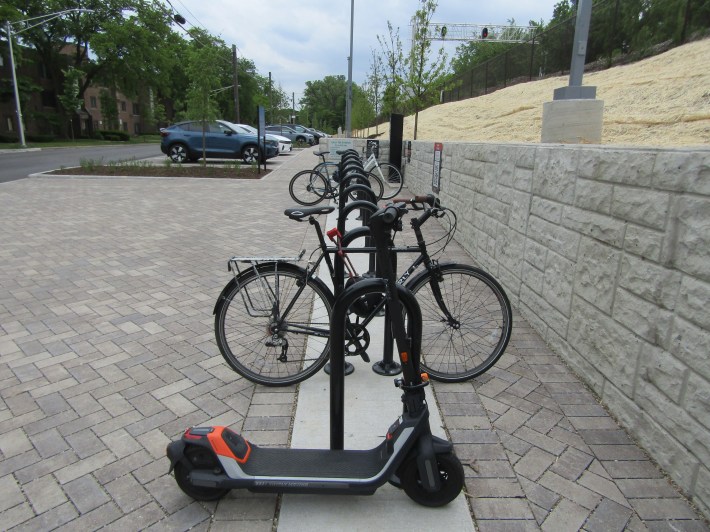
Both platforms have shelters, althrough only the inbound platform has a fully enclosed shelter. Each platform has a live train tracking displays.
Interestingly, the inbound platform has a covered sitting area with a bench that faces Peterson Avenue. The view isn’t the most scenic, but if you want to sit and watch the Peterson Avenue traffic pass by, that is an option.
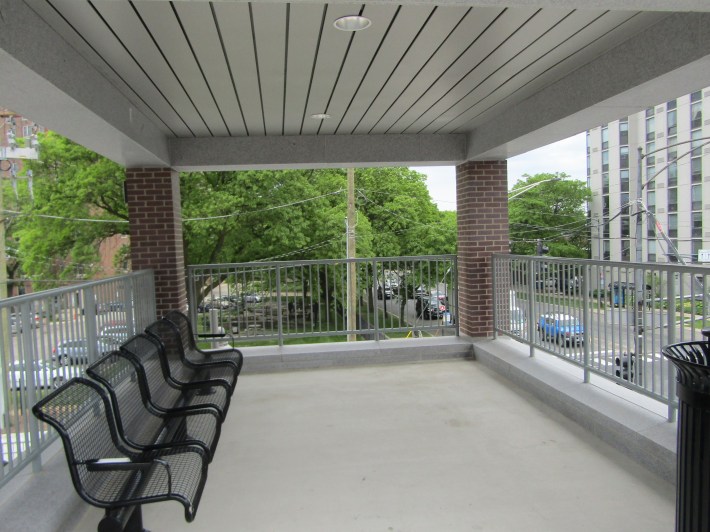
There is a kiss-and-ride turnaround and some car parking, But, aside from the aforementioned bike racks, there's not much in the way of cycling infrastructure at this point. That may soon change. According to 40th Ward Director of Communications and Development Alison Murphy, the ward office is working with the Chicago Department of Transportation on a comprehensive safety plan for the entire Peterson Avenue corridor.
"There will also be bike and pedestrian safety improvements coming to the area surrounding the station as part of the Ravenswood arterial resurfacing this year, and the upcoming expansion of the North Side bike network," Murphy said.
Murphy said that the details will be shared at the Ward Development Town Hall on Wednesday, June 5, 6 p.m. at DANK Haus, 4740 N. Western Ave. in Lincoln Square. The event is open to the public.

Did you appreciate this post? Please consider making a tax-deductible donation to support Streetsblog Chicago's paywall-free sustainable transportation reporting and advocacy.
